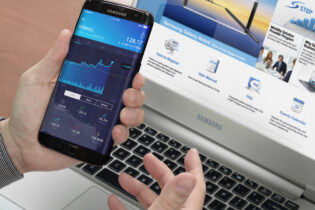The rate of innovation in the mobile computing space is starting to render traditional means of acquiring mobile computing software and devices obsolete. Now emerging are new models that make it simpler to consume a device-as-a-service format.
Historically, IT organizations would purchase devices that they wrote off over the span of three to five years. This was fine in an era when operating system and application upgrades came every few years. But with the rise of subscription services, software upgrades are now continuous, and a device bought even two years ago starts to become noticeably slower after a series of application upgrades. As the number of applications on the device increases over time, the end user experience degrades.
To make matters more challenging, employees now regularly need to access files and applications on Windows systems using any number of type of mobile computing devices. To address this issue, a bevy of desktop-as-a-service (DaaS) offerings arose, based primarily on virtual desktop infrastructure (VDI) technologies. Rather than buying hardware, many organizations are now also starting to take DaaS to the next logical level by looking at device-as-a-service models.
Going Beyond Hardware
This approach is based on a subscription that applies to both the software and the hardware, and has the software locally deployed through any type of device. In fact, a model originally applied to software running on smartphones is now extending to PCs, tablets and mobile devices to create a new device-as-a-service model that embeds hardware upgrades into a multiyear contract.
Not Yet a Samsung Partner?
Register to get exclusive benefits, including access to our Partner Marketing Hub. Download Now
Distributors such as Ingram Micro and Tech Data have both kicked off subscription services designed to allow channel partners to bundle hardware as part of the service, significantly lowering the total initial cost of becoming a managed service provider (MSP).
Of course, the best part of having this capability is that it puts the solution provider in position to layer any number of higher-margin management and security services on top of that core subscription service.
A Model Driven by Cloud
A small cadre of managed service providers have been providing some variation of these type of services for years. But with the rise of cloud computing, there’s a lot more customers that want to treat every aspect of IT as an operational expense — including devices and services. Rather than having to allocate limited budget dollars to acquiring devices and software, many organizations now prefer to pay a monthly fee based on the number of active users they have employed. This also provides a level of flexibility that businesses crave, since this format allows them to add and subtract users as needed.
Naturally, this shift has major implications for the business models of solution providers. Reselling equipment brings in immediate revenue that many solution providers then use to pay their vendor partners once the deal is made official. Managed services require a different business model where the solution provider is compensated every month.
In some instances, solution providers are availing themselves of financing from vendors to help make that transition. In other cases, a new class of cloud solution and device providers are emerging that are not beholden to legacy business models. Regardless of where any given solution provider starts their journey, however, there’s no getting away from the simple fact that the way hardware is acquired and consumed is about to be utterly changed.
The Partner Marketing Hub has a wealth of resources to help you accelerate your business growth. Visit the Samsung Partner Portal today to learn more.








